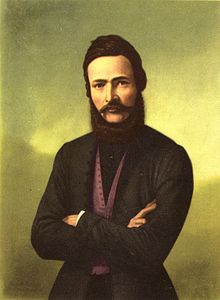Kingdom of Hungary (1000–1919)
 History of Slovakia
History of Slovakia
Kingdom of Hungary (1000–1919)
Following the disintegration of the Great Moravian Empire in the early 10th century, the Hungarians gradually annexed the territory comprising modern Slovakia. In the late 10th century, south-western areas of the present-day Slovakia became part of the rising Hungarian principality, which became the Kingdom of Hungary after 1000. Thereafter the region became an integral part of the Hungarian state until the collapse of the Austro-Hungarian Empire in 1918. The ethnic composition became more diverse with the arrival of the Carpathian Germans in the 13th century, and in the 14th century the Jews.
A significant decline in the population resulted from the invasion of the Mongols in 1241 and the subsequent famine. However, in medieval times the area of the present-day Slovakia was characterized rather by burgeoning towns, construction of numerous stone castles, and the cultivation of the arts. In 1465, King Matthias Corvinus founded the Hungarian Kingdom's third university, in Pozsony (Bratislava), but it was closed in 1490 after his death.
After the Ottoman Empire's expansion into Hungary and the occupation of Buda in the early 16th century, the center of the Kingdom of Hungary (under the name of Royal Hungary) shifted to Pozsony ( in Slovak: Prespork at that time, currently Bratislava) which became the capital city of Royal Hungary in 1536. But the Ottoman wars and frequent insurrections against the Habsburg Monarchy also inflicted a great deal of destruction, especially in rural areas. As the Turks withdrew from Hungary in the late 17th century, the importance of the territory comprising modern Slovakia decreased, although Bratislava retained its status as the capital of Hungary until 1848, when it was transferred to Buda.
During the revolution of 1848–49 the Slovaks supported the Austrian Emperor, hoping for independence from the Hungarian part of the Dual Monarchy, but they failed to achieve their aim. Thereafter relations between the nationalities deteriorated, culminating in the secession of Slovakia from Hungary after World War I.
Source: www.wikipedia.org
On the photo: Ľudovít Štúr
Quick navigation
Slovaks on the map
Slovakia 2011

Let's talk
Exchange rates
Most read - SK Forum
| 25456x | Chcete lietať KE -… |
|---|---|
| 19691x | CESTA DOMOV (krizova) |
| 17034x | Slovaks in London wanted… |
| 12555x | Free Intercultural Communication… |
| 12091x | Cesta z UK na SR tento… |












